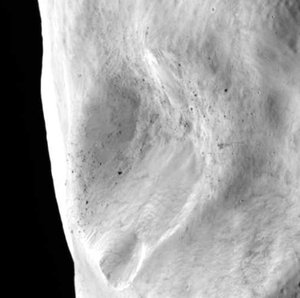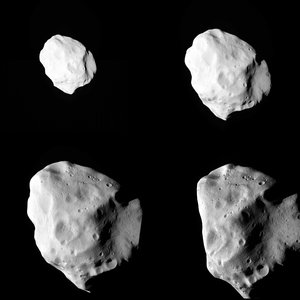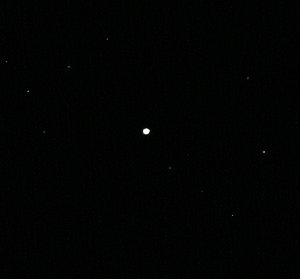Accept all cookies Accept only essential cookies See our Cookie Notice

About ESA
The European Space Agency (ESA) is Europe’s gateway to space. Its mission is to shape the development of Europe’s space capability and ensure that investment in space continues to deliver benefits to the citizens of Europe and the world.
Highlights
ESA - United space in Europe
This is ESA ESA facts Member States & Cooperating States Funding Director General Top management For Member State Delegations European vision European Space Policy ESA & EU Space Councils Responsibility & Sustainability Annual Report Calendar of meetings Corporate newsEstablishments & sites
ESA Headquarters ESA ESTEC ESA ESOC ESA ESRIN ESA EAC ESA ESAC Europe's Spaceport ESA ESEC ESA ECSAT Brussels Office Washington OfficeWorking with ESA
Business with ESA ESA Commercialisation Gateway Law at ESA Careers Cyber resilience at ESA IT at ESA Newsroom Partnerships Merchandising Licence Education Open Space Innovation Platform Integrity and Reporting Administrative Tribunal Health and SafetyMore about ESA
History ESA Historical Archives Exhibitions Publications Art & Culture ESA Merchandise Kids Diversity ESA Brand Centre ESA ChampionsLatest
Space in Member States
Find out more about space activities in our 23 Member States, and understand how ESA works together with their national agencies, institutions and organisations.
Science & Exploration
Exploring our Solar System and unlocking the secrets of the Universe
Go to topicAstronauts
Missions
Juice Euclid Webb Solar Orbiter BepiColombo Gaia ExoMars Cheops Exoplanet missions More missionsActivities
International Space Station Orion service module Gateway Concordia Caves & Pangaea BenefitsLatest
Space Safety
Protecting life and infrastructure on Earth and in orbit
Go to topicAsteroids
Asteroids and Planetary Defence Asteroid danger explained Flyeye telescope: asteroid detection Hera mission: asteroid deflection Near-Earth Object Coordination CentreSpace junk
About space debris Space debris by the numbers Space Environment Report In space refuelling, refurbishing and removingSafety from space
Clean Space ecodesign Zero Debris Technologies Space for Earth Supporting Sustainable DevelopmentApplications
Using space to benefit citizens and meet future challenges on Earth
Go to topicObserving the Earth
Observing the Earth Future EO Copernicus Meteorology Space for our climate Satellite missionsCommercialisation
ESA Commercialisation Gateway Open Space Innovation Platform Business Incubation ESA Space SolutionsLatest
Enabling & Support
Making space accessible and developing the technologies for the future
Go to topicBuilding missions
Space Engineering and Technology Test centre Laboratories Concurrent Design Facility Preparing for the future Shaping the Future Discovery and Preparation Advanced Concepts TeamSpace transportation
Space Transportation Ariane Vega Space Rider Future space transportation Boost! Europe's Spaceport Launches from Europe's Spaceport from 2012Latest

Farewell Lutetia
Thank you for liking
You have already liked this page, you can only like it once!
This ethereal image shows a stunning sliver of large main-belt asteroid Lutetia from the viewpoint of ESA’s Rosetta spacecraft, taken as Rosetta passed by on its 10-year voyage towards comet 67P/Churyumov–Gerasimenko.
This week marks four years since Rosetta flew by this ancient rocky body, on 10 July 2010. As the spacecraft swung past Lutetia it snapped hundreds of high-resolution photographs with its Optical, Spectroscopic and Infrared Remote Imaging System (OSIRIS) as well as obtaining valuable spectra, and maps of the surface temperature using other instruments.
This image was taken as Rosetta had passed its closest approach, at just under 3170 km from Lutetia’s surface, and was beginning its journey away from the asteroid.
As a result of this flyby, astronomers have been able to characterise Lutetia, viewing the wide range of craters and geological features scarring the asteroid’s surface and gauging its mass and volume–and thus density and composition. These measurements showed that Lutetia is primordial, likely having formed just under 4 billion years ago during the very early phases of the Solar System.
This asteroid is one of just two that Rosetta has closely flown past, the other being asteroid Steins in 2008.
Rosetta was launched in 2004 and, after 10 years in space, will finally rendezvous with its target comet in August. It will study the comet’s surface, dust and gases in unprecedented detail, deploy a lander onto its surface, and follow the comet for over a year as it orbits around the Sun.
-
CREDIT
ESA 2010 MPS for OSIRIS Team MPS/UPD/LAM/IAA/RSSD/INTA/UPM/DASP/IDA -
LICENCE
ESA Standard Licence

Lutetia at closest approach

Lutetia asteroid

Asteroid Lutetia

Landslide on Lutetia















 Germany
Germany
 Austria
Austria
 Belgium
Belgium
 Denmark
Denmark
 Spain
Spain
 Estonia
Estonia
 Finland
Finland
 France
France
 Greece
Greece
 Hungary
Hungary
 Ireland
Ireland
 Italy
Italy
 Luxembourg
Luxembourg
 Norway
Norway
 The Netherlands
The Netherlands
 Poland
Poland
 Portugal
Portugal
 Czechia
Czechia
 Romania
Romania
 United Kingdom
United Kingdom
 Slovenia
Slovenia
 Sweden
Sweden
 Switzerland
Switzerland

























